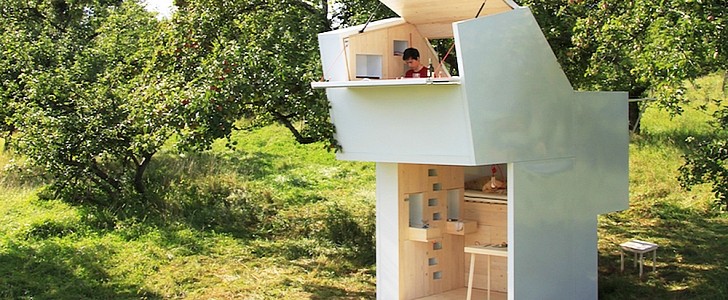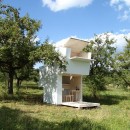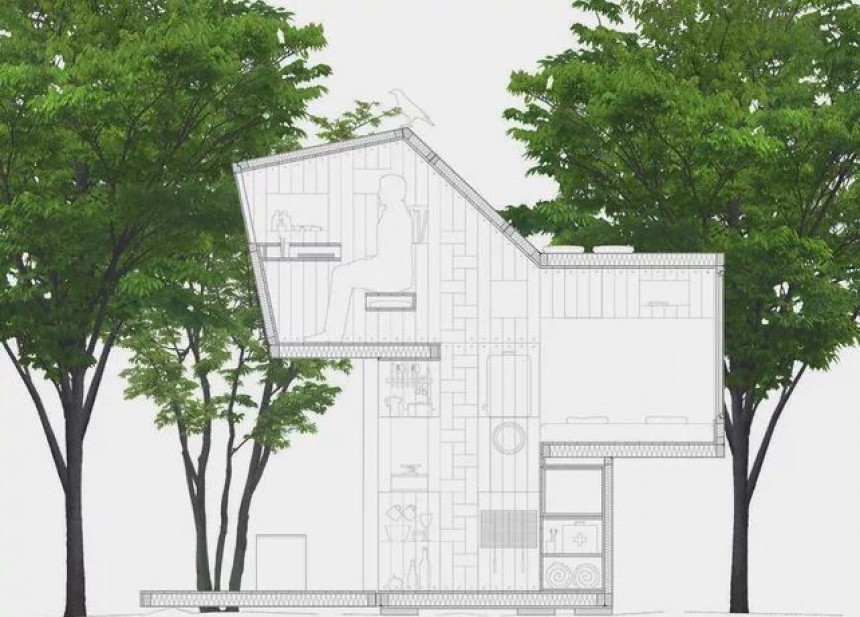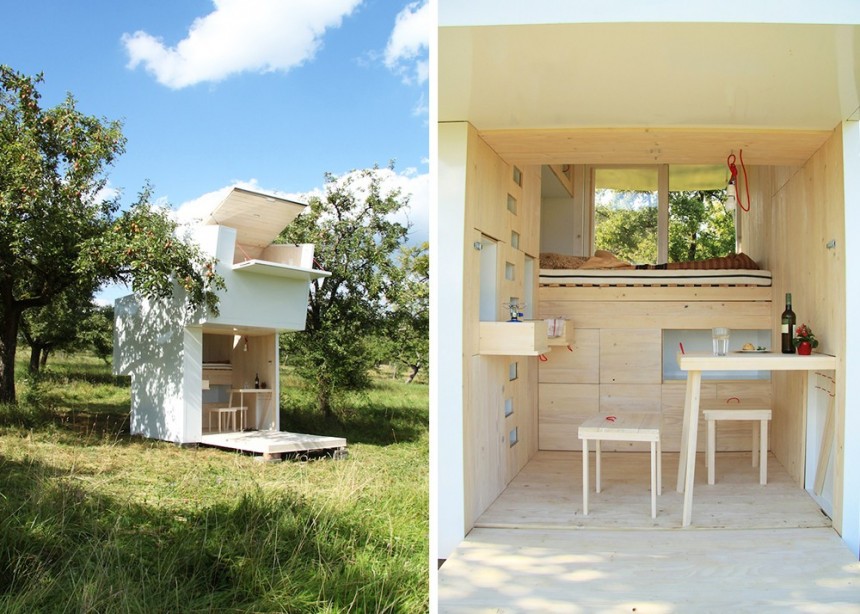Mobility is important, especially in today’s context of constant restrictions and regulations on travel and socializing. Affordable housing is equally important, so a solution that would combine the two would be ideal.
Last June, Tesla and SpaceX CEO Elon Musk announced on Twitter that he was living in a rented Casita from Boxabl, instantly sending the company’s reputation into the stratosphere – and its possible revenue past the $1 billion mark, based on paid reservations and pre-orders. Casita is a prefabricated unit that folds down and can be transported to the owner, where it’s assembled on site by a small crew within days.
This type of prefabs have become more common in recent years because affordable housing is still far from a reality. Before the Boxabl Casita, though, there was the Seelenkiste, also known as the Soul Box or the Spirit Shelter. It never made it past the production of just one demo unit, but it served to show not just that affordable housing was possible but that it could also satisfy the demand for increased mobility. For that reason alone, it deserves another five minutes in the spotlight.
Seelenkiste was a project by a small design studio from Germany called Allergutendinge, which focuses on sustainable building practices. Comprised of Matthias Prüger, Manuel Rauwolf, and Ulrike Wetzel of the Bauhaus University Weimar, the studio developed the project for this tiny movable house and implemented the construction a while later, in the spring of 2012. It was displayed locally as an “emotional hideaway,” a place that could help man reconnect with nature and himself.
“Due to the speed of today’s digitized world, the dream for a new Arcadia is getting stronger,” Allergutendinge said at the time. In other words, cut off from his natural environment, man yearned to be reconnected with it and, at the same time, live an uncomplicated but happy life. This is what Seelenkiste promised: the very basics for a simple lifestyle, alongside the possibility to enjoy it wherever you wanted, for as long as you wanted.
Seelenkiste was basically a folding prefab house that could be set up on any level ground, using only some support and no foundation. Because it was lightweight, it could easily be moved from place to place when the two residents wanted to, though it clearly lacked the high degree of mobility of an RV or even today’s ever-so-popular tiny houses.
With a wooden frame clad in fiberglass-reinforced plastic panels, the Seelenkiste was all wood inside, down to the fold-away furniture. It offered a footprint of 8 square meters (86 square feet) and was barely spacious for two residents who did not require much by means of leading a comfortable life.
To minimize its impact on the environment, it was designed as a three-story(-ish) structure – a most surprising twist for a foldable prefab. The ground floor was the dining and kitchenette area, with the front wall folding all the way out to create a porch. The kitchenette was spartan even by the most generous definition: even the designers said you could only make a cup of tea or coffee in there, so the small table with the two seats was probably reserved for dining on cold cuts.
The bedroom area was mid-height between the ground and upper section and served as the first stepping stair toward it. By using the integrated storage as steps, the Seelenkiste eliminated the need for a staircase. The upper story held the office area, cantilevered over the porch, and it too had a fold-away wall that opened it up completely to the elements, so you could sit at the desk and look out on the surrounding environment.
Of course, the Seelenkiste was not without flaws, even as a concept and only prototype. The biggest one is obviously the lack of a bathroom, as well as the designers’ failure to mention anything of running water or electricity. After all, if you’re going to work in this prefab and preferably do it with a cup of something hot on the desk, where are you to get the power and the water for it? Then, there’s the issue of ventilation on wet or colder days, when neither of the fold-away walls could be… well, folded away. Would you not be living in a slightly-taller, dark wooden box then?
That said, the Seelenkiste never aimed to be an all-encompassing solution, a permanent residence, but rather a “small research station, [...] a place to sleep, a niche for sitting,” and an “emotional hideaway” that will encourage residents to live harmoniously with nature and themselves. A dream.
This type of prefabs have become more common in recent years because affordable housing is still far from a reality. Before the Boxabl Casita, though, there was the Seelenkiste, also known as the Soul Box or the Spirit Shelter. It never made it past the production of just one demo unit, but it served to show not just that affordable housing was possible but that it could also satisfy the demand for increased mobility. For that reason alone, it deserves another five minutes in the spotlight.
Seelenkiste was a project by a small design studio from Germany called Allergutendinge, which focuses on sustainable building practices. Comprised of Matthias Prüger, Manuel Rauwolf, and Ulrike Wetzel of the Bauhaus University Weimar, the studio developed the project for this tiny movable house and implemented the construction a while later, in the spring of 2012. It was displayed locally as an “emotional hideaway,” a place that could help man reconnect with nature and himself.
Seelenkiste was basically a folding prefab house that could be set up on any level ground, using only some support and no foundation. Because it was lightweight, it could easily be moved from place to place when the two residents wanted to, though it clearly lacked the high degree of mobility of an RV or even today’s ever-so-popular tiny houses.
With a wooden frame clad in fiberglass-reinforced plastic panels, the Seelenkiste was all wood inside, down to the fold-away furniture. It offered a footprint of 8 square meters (86 square feet) and was barely spacious for two residents who did not require much by means of leading a comfortable life.
To minimize its impact on the environment, it was designed as a three-story(-ish) structure – a most surprising twist for a foldable prefab. The ground floor was the dining and kitchenette area, with the front wall folding all the way out to create a porch. The kitchenette was spartan even by the most generous definition: even the designers said you could only make a cup of tea or coffee in there, so the small table with the two seats was probably reserved for dining on cold cuts.
Of course, the Seelenkiste was not without flaws, even as a concept and only prototype. The biggest one is obviously the lack of a bathroom, as well as the designers’ failure to mention anything of running water or electricity. After all, if you’re going to work in this prefab and preferably do it with a cup of something hot on the desk, where are you to get the power and the water for it? Then, there’s the issue of ventilation on wet or colder days, when neither of the fold-away walls could be… well, folded away. Would you not be living in a slightly-taller, dark wooden box then?
That said, the Seelenkiste never aimed to be an all-encompassing solution, a permanent residence, but rather a “small research station, [...] a place to sleep, a niche for sitting,” and an “emotional hideaway” that will encourage residents to live harmoniously with nature and themselves. A dream.












